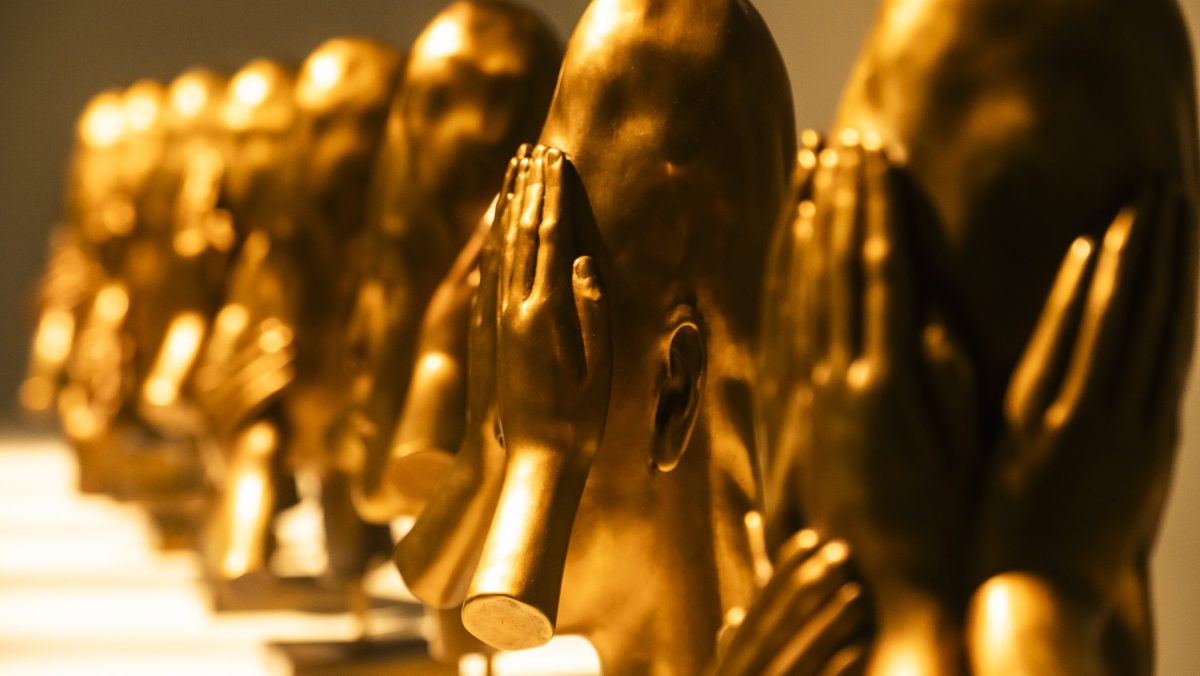Inner Matter: A work in fifteen fragments
Iris, created by Jaume Plensa, a symbol of the power of human communication, forms part of Distrito Telefónica and will be the company’s Centenary legacy.
Today we want to know a little more about its author, recognised as one of the most relevant artists of today. And enjoy the monographic exhibition presented by Espacio Fundación Telefónica.
The exhibition
A retrospective exhibition featuring fifteen works by the artist. The artist himself presents it as: A work in fifteen fragments; showing the connection that exists between all the works.
In the exhibition, this connection can be appreciated and one can perceive how his sculpture has evolved. Jaume Plensa feels art as a consequence of his own evolution as a human being. He begins with materials such as iron, bronze, aluminium, alabaster and gradually incorporates light, sound and words. Many of the elements that characterise his work are represented in the selection of pieces.
The human figure
He is a great interpreter of the human figure. In particular, he chooses the head as a summary element of the body, which he considers to be ‘the palace of knowledge’. The concept of the other is of great importance: what the image of the human being is like when it is reflected in a mirror and even what it is like when it is reflected in another person, the artist suggests.
His interest in duality: Body – Soul, Transparency – Density, Diversity – Similarity, Individual – Community, Light – Darkness.
Water
The author has always shared his passion for the sea. We are not separated by an ocean, rather they unite us. His work, like islands connected by the ocean, pronounces. And therefore, the interrelation that many of his works have with this element. The need to find that sea, sometimes physical and sometimes metaphorical, in order to find oneself.
Silence
The exhibition space has been carefully prepared, like a camera obscura, an itinerary of light to offer us a sensation of intimacy. An environment in which to listen to one’s own words, one’s own heart and oneself.
The sculptures, characters with their eyes closed, invite us to silence and accompany us in the search for the inner path. A call to stillness.
Poetry
The word, dialogue and communication are always present in his work. The human being in union with the word.
The author, at another point in his career, has highlighted the verse of the poet William Blake: A thought fills the immensity. This verse sums up his intention, the importance of ideas to fill space with energy. Life is permanently tattooing our bodies with invisible ink, he said. It produces a hidden message that some will be able to read and some will not.
Beauty
It is simply beauty. It is a real privilege of contemplation.
For Jaume Plensa, art has the tremendous capacity to change the world. Art asks nothing in return; that is why it is so important.
Biography of the author
He was born in Barcelona in 1955. He trained at the Escuela Superior de Diseño y Arte Llotja and at the Escuela Superior de Bellas Artes of the city.
Since the 1980s he has lived and worked in many countries: Germany, Belgium, England, France, the United States, etc. Barcelona is the city where he currently lives, works and returns to.
He held his first solo exhibition in 1980 and since then, his career has led to his works being shown in prominent venues in Spain, France, Japan and the United States, among others.
He has received numerous awards, including the National Prize for Fine Arts, the Velázquez Prize for the Arts and the Knight’s Medal of the Order of Arts and Letters awarded by the French Ministry of Culture.
He combines his creative activity with teaching. In addition to the numerous lectures and courses he gives around the world, he has taught at the École nationale supérieure des Beaux-Arts in Paris and at the School of the Art Institute of Chicago. He was recently awarded an honorary doctorate by the University of Barcelona.
He is a plastic artist whose work includes drawing, engraving, scenography and especially sculpture.
